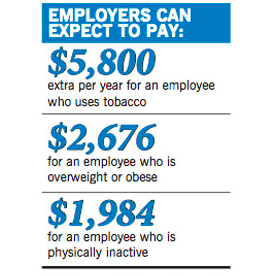Transparency is extremely important to us, so we are letting you know that we may receive a commission on some of links you click on from this page. See our disclaimer.
Need easy tips on how to make your workplace wellness program work? Culture matters.
According to the Upstate Business Journal: “While behavior change programs can be effective at producing individual change, programming alone will never be effective at changing organizational culture.”
In a post by Emily O’Sullivan, corporate wellness specialist for the South Carolina Hospital Association’s Working Well Initiative, O'Sullivan provides a range of tips to address company culture:
1) “Addressing policies, systems, environment and benefits is essential to producing a sustainable culture of wellness”
- “These changes are often low- or no-cost, making them attainable for all employers regardless of size and available resources.”
- “Policy, systems and environmental changes impact 100 percent of the employee population, while programs only impact those employees who choose to participate, often missing those who need it most.”
- “These changes help to produce lasting results because they are more permanent, unlike programs which come and go from year to year.”
- “Policy, systems and environmental changes approach employee health from an organizational level rather than just an individual level.”
2) “Examples of policies to support employee health”
- “A 100 percent tobacco-free, property-wide policy.”
- “A healthy food policy to ensure that delicious, affordable, healthy foods are available to employees during all hours of operation.”
- “A physical activity policy to allow employees to exercise on paid time, to offer flex time for physical activity, or to encourage the use of paid breaks for physical activity.”
3) “Examples of environmental changes to support employee health include:
- “Providing employees with easy access to fitness equipment or a walking trail on site.”
- “Providing and promoting healthy foods in cafeterias and vending machines through product placement and pricing strategies.”
- “Eliminating ashtrays and tobacco receptacles from the property to discourage the use of tobacco products.”
The post provides a helpful infographic:





0 Comments